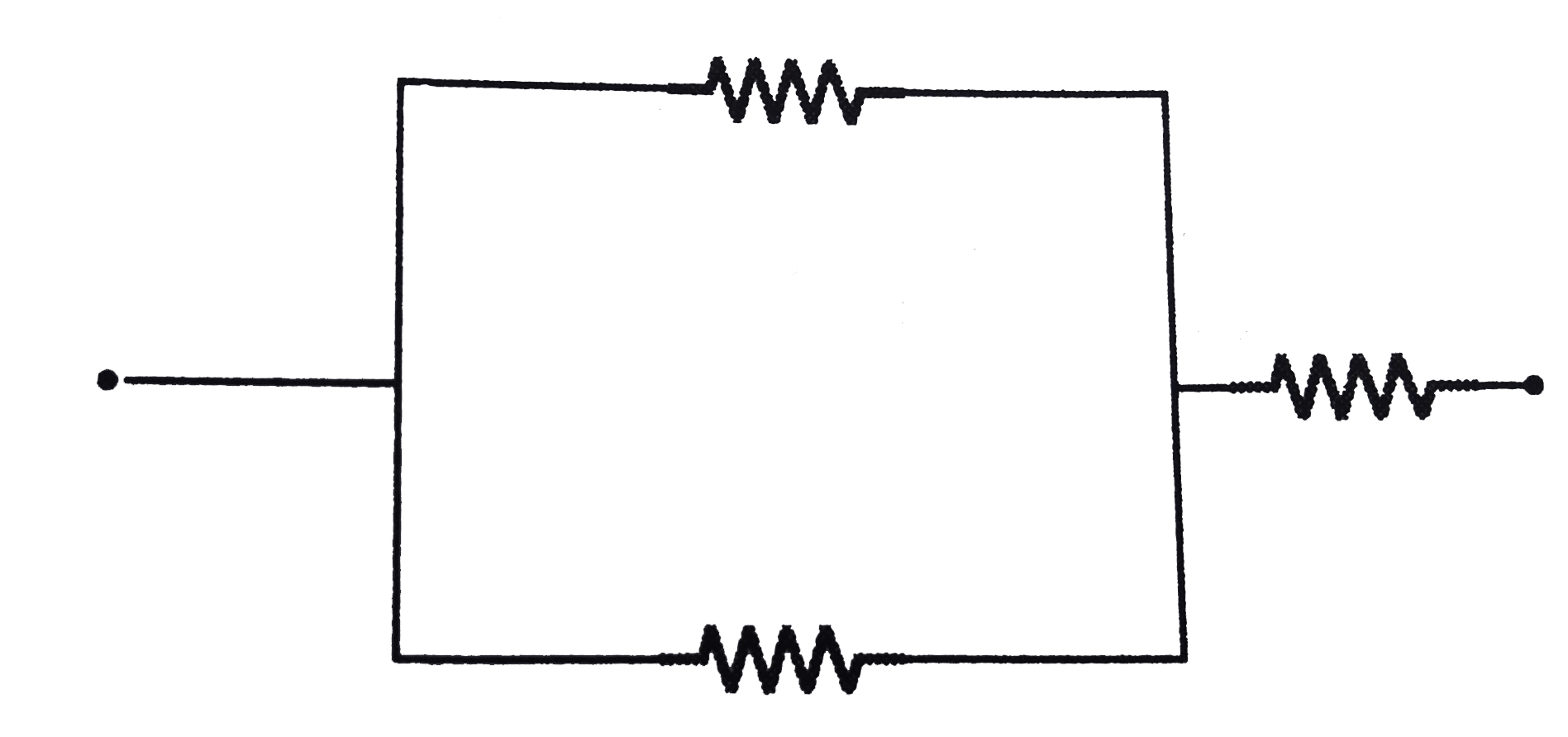The maximum voltage that can be applied to 5 KΩ and 8W resistor without exceeding its heat dissipating capacity is
A) 100 v
B) 400V
C) 160V
D) 200 V
The correct Answer is:D
To find the maximum voltage that can be applied to a 5 kΩ resistor without exceeding its heat dissipating capacity of 8 W, we can use the formula relating power, voltage, and resistance.
1. Identify the given values:
- Resistance R=5kΩ=5000Ω
- Power P=8W
2. Use the power formula:
The power dissipated in a resistor can be expressed using the formula:
P=V2R
where P is the power, V is the voltage across the resistor, and R is the resistance.
3. Rearrange the formula to solve for voltage V:
V2=P×R
V=√P×R
4. Substitute the known values into the equation:
V=√8W×5000Ω
5. Calculate the product:
8×5000=40000
6. Take the square root:
V=√40000=200V
7. Conclusion:
The maximum voltage that can be applied to the resistor without exceeding its heat dissipating capacity is V=200V.
Final Answer:
The maximum voltage is 200 volts.
- Resistance R=5kΩ=5000Ω
- Power P=8W
The power dissipated in a resistor can be expressed using the formula:
P=V2R
where P is the power, V is the voltage across the resistor, and R is the resistance.
V2=P×R
V=√P×R
V=√8W×5000Ω
8×5000=40000
V=√40000=200V
The maximum voltage that can be applied to the resistor without exceeding its heat dissipating capacity is V=200V.
The maximum voltage is 200 volts.
Topper's Solved these Questions
- APPENDICES ( REVISION EXERCISE )Book:AAKASH SERIESChapter:APPENDICES ( REVISION EXERCISE )Exercise:REVISION EXERCISE (MOVING CHANGES & MEGNETISM)
Explore 95 Videos
- APPENDICES ( REVISION EXERCISE )Book:AAKASH SERIESChapter:APPENDICES ( REVISION EXERCISE )Exercise:REVISION EXERCISE (MAGNETISM AND MATTER )
Explore 52 Videos
- APPENDICES ( REVISION EXERCISE )Book:AAKASH SERIESChapter:APPENDICES ( REVISION EXERCISE )Exercise:REVISION EXERCISE (ELECTRIC POTENTIAL & CAPACITANCE )
Explore 143 Videos
- ALTERNATING CURRENTBook:AAKASH SERIESChapter:ALTERNATING CURRENTExercise:EXERCISE - III
Explore 24 Videos
- APPENDICES (REVISION EXERCISE)Book:AAKASH SERIESChapter:APPENDICES (REVISION EXERCISE)Exercise:LAW OF MOTION
Explore 128 Videos
Similar Questions
The maximum voltage that can be applied to 5KΩ and 8W resistor without exceeding its heat dissipating capacity is
View SolutionThree 10Ω,2W resistors are connected as in Fig. 7.34. The maximum possible voltage between points AandB without exceeding the power dissipation limits of any of the resistors is

View SolutionThree 200Ω resistors are connected as shown in figure. The maximum power that can be dissipated in any one of the resistor is 50 W. Find the total power in watts dissipated in the circuit for maximum voltage across the terminals A and B.

View SolutionWhen a voltage V=V0 cos ωt is applied across a resistor of resistance R, the average power dissipated per cycle in the resistor is given by
View SolutionEach of three resistors in figure has a resistance of 2.4Ω and can dissipate a maximum of 36 W without becoming excessively heated. What is the maximum power the circuit can dissipate?

View SolutionAn alternating voltage V=140 sin 50 t is applied to a resistor of resistance 10 Ω. This voltage produces △H heat in the resistor in time △t. To produce the same heat in the same time, rquired DC current is
View SolutionAn alternating voltage V=140 sin 50 t is applied to a resistor of resistance 10 Ω. This voltage produces △H heat in the resistor in time △t. To produce the same heat in the same time, rquired DC current is
View SolutionWhat is the maximum resistance which can be made using five resistors each of (1/5)Ω ?
View SolutionA capacitor of capacitance 3μF is first charged by connecting it across a 10 V battery by closing key K1. Then it is allowed to get discharged through 2Ω and 4Ω resistors by closing the key K2. The total energy dissipated in the 4Ω resistor is equal to

View SolutionThe maximum load that a wire can sustain is W. If the wire is cut to half its value, the maximum load it can sustain is
View Solution
